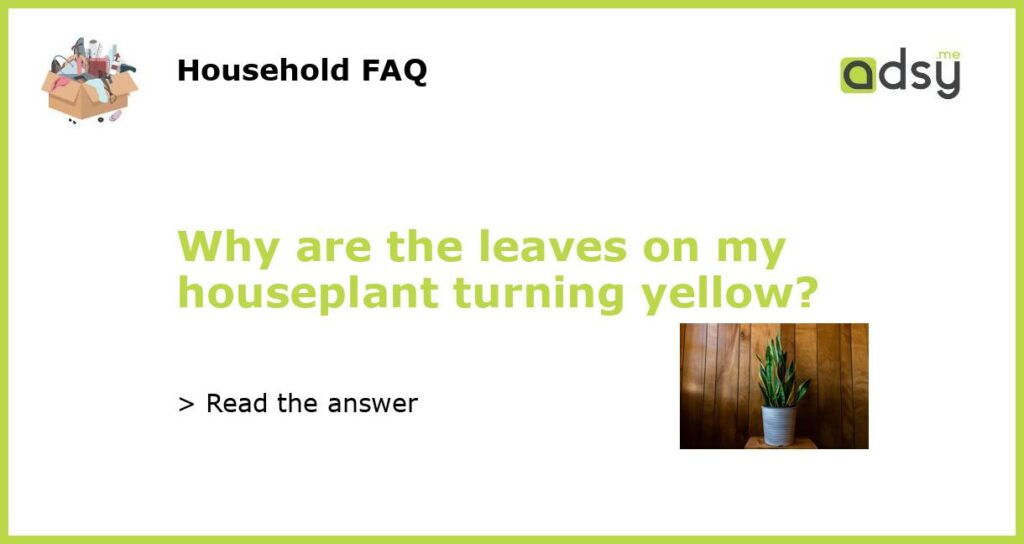Understanding why leaves turn yellow on houseplants
One of the most common problems among houseplant owners is yellowing leaves. This can be a frustrating issue, especially after taking good care of your plant. However, this can happen due to several reasons, including overwatering, underwatering, pests, and diseases.
The impact of overwatering on houseplants
Overwatering is one of the most common reasons for yellow leaves on houseplants. When plants have too much water, the soil will become waterlogged, reducing the plant’s ability to take in oxygen. Over time, this leads to root rot, which prevents plants from absorbing nutrients, causing yellow leaves to appear. If you notice the leaves turning yellow, it may be best to repot the plant into fresh soil and remove any damaged roots. Water only when the soil is dry to the touch.
The impact of underwatering on houseplants
Underwatering is also a common problem faced by houseplant owners – in this case, the leaves will turn yellow and appear dry and crispy. When the soil is too dry, water will not be readily available to the roots for uptake. As a result, the leaves will start to turn yellow, first from the bottom up, and may fall off eventually. To avoid this issue, ensure you water your plants regularly and maintain consistent moisture levels in the soil.
Pests and diseases that cause yellowing leaves
Yellowing leaves can also be caused by pests such as spider mites, mealybugs, and scale. Pest-infested leaves often have tiny webs or visible insects. Diseased plants can develop yellow leaves as well. Plant diseases like verticillium wilt or bacterial leaf spot can also cause yellow leaves. If you suspect that the yellowing is due to pests or disease, isolate the plant and get help from a nursery or gardening specialist.
Yellowing leaves on houseplants can be a sign that something isn’t quite right. By identifying the root cause of the issue, you can take steps to correct it, ensuring the health and longevity of your plants. Make sure to give your plants the appropriate amount of water, keep them free from pests, and monitor them regularly to catch any issues early.






